India is a diverse land. Every corner of India speaks of its Dharmic values that are embedded in the form of Sanatan Dharma. In this prestigious land, lies several shrines dedicated to the Gods and Goddesses of Hinduism. One such shrine is the Vaishno Devi Dham, the Abode of the Vaishno Mata in Katra, Jammu. The Vaishno Devi Dham is one of the most visited Hindu sacred sites, second only to the Holy Tirupati Balaji Dham. Every year, around one crore devotees visit the holy shrine in a quest to take the blessings of Vaishno Mata who is present in the form of Pines in the sanctum Sanctorum of the temple. Unique enough, this is the only temple in the entire land of India which has no idol or image, instead, the temple is resided by a five and a half feet rock along with three pinds on top of it. The three Pinds are said to have been the representation of the Goddesses Parvati, Saraswati and Lakshmi themselves.
Surrounded by the pristine mountains on either side of the Divine shrine, the Vaishno Devi Dham is located in the small town of Katra in the Uddhampur district of Jammu state. The Holy Shrine is managed by the Vaishno Devi Shrine Board. The shrine is located at 5200 feet above sea level and Devotees have to walk 13kms from Katra Base to take the blessings of the Vaishno Devi.
Table of contents
- Introduction
- The story of Mata Vaishno Devi Shrine
- Birth as Vaishnavi
- Blessing from Shri Rama
- Journey to Trikuta hills
- Boon to Bhairav Nath
- Other Sacred Shrines in Vaishnodevi
- Reference in Mahabharat
- Tale of Pandit Shridhar
- Visit by Guru Gobind Singh
- Trekking and Darshan at Vaishno Devi
- Going for the Darshan
- Coming Down After Darshan
- Ponies, Palanquins and Helicopter Facilities
- How to reach there?
- Accommodation in Katra
- Conclusion
- Frequently asked questions
The Story of Origin of Vaishno Devi
The Shrine of Vaishno Devi is Geologically, Spiritually and Historically an important site. According to Geologists, the caves in which the Sanctum Sanctorum of the Shrine is located in one million years old. Nobody knows who established the shrine, However, there is a popular tale behind the origin of the Vaishno Devi.
1. Birth as Vaishnavi
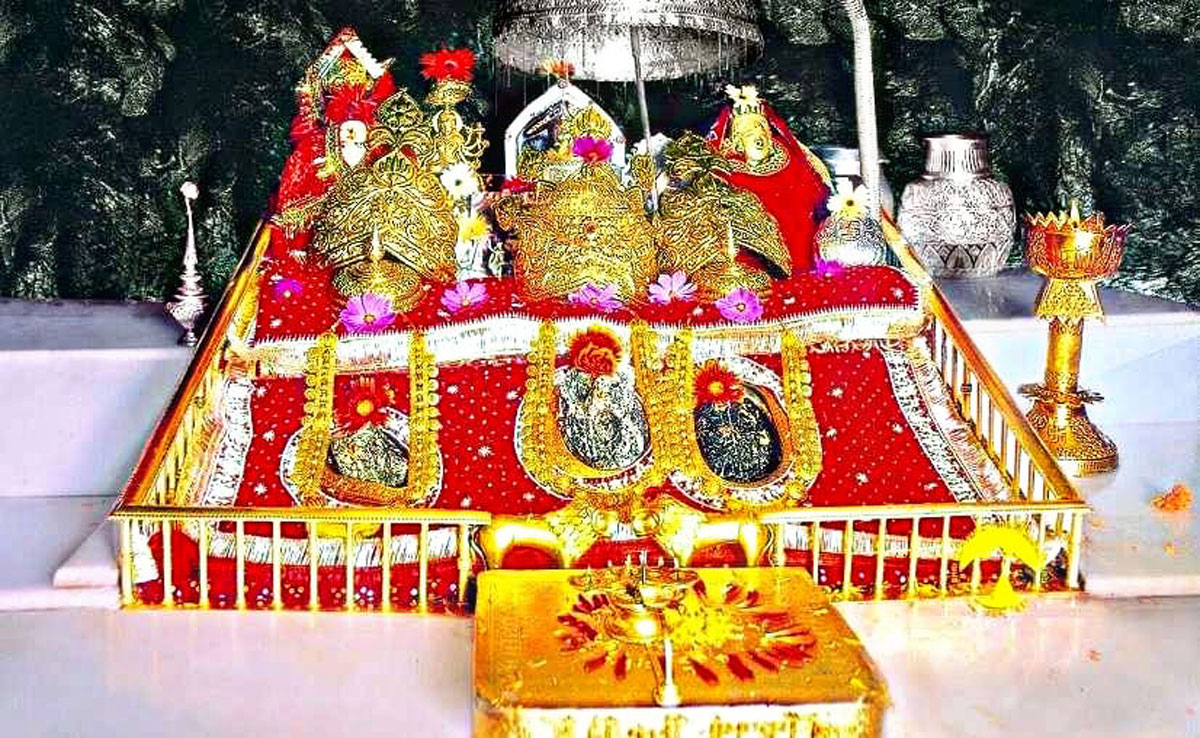
It is said that when in tretayuga, The Asuras were attacking Ethical mankind and causing distress in the entire earth, the Goddess trinity, Parvati, Saraswati and Lakshmi manifested their divine energies known as Tejas, into a young girl. The Devis asked the girl to take birth in the house of Ratnakar who lived with his wife in the Southern part of India. The Devis told the girl to devote herself to Spirituality and penance to spread the righteousness or Dharma in the World. The device also told her that when reaches the highest level of consciousness, she would merge with Vishnu, the preservator of the Universe.
The Girl then takes birth in Ratnakar’s house as Vaishnavi. Since childhood, She had an unusual quest for Knowledge and Spirituality.
Vaishnavi, to fulfil the responsibility given to her by the tridevis, decided to penance in the deep forest.
Also Read: Srinagar – A Mesmerizing Himalayan City In Jammu And Kashmir
2. Blessing from Shri Rama
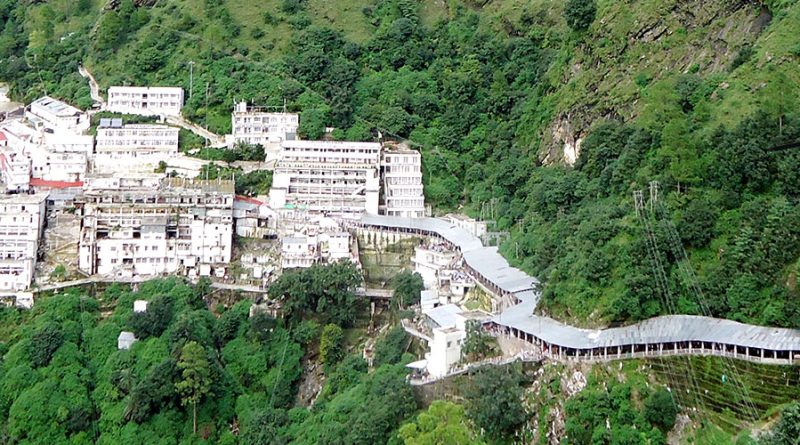
While she was deeply engrossed in her meditation, She was visited by Rama, The seventh incarnation of Vishnu, who was going to get his wife Sita back from the clutches of Ravana, the demon King of Lanka. Vaishnavi, on meeting Rama, expressed her desire to merge with him, as she knew that he is the incarnation of Vishnu. Rama, on the other hand, told her that this is not possible, since he had vowed to never marry any other woman except Sita. Shri Ram blessed her and said that In Kaliyuga when he will take birth as Kalki, He will marry her. He then asked her to go to Trikuta hills in Northern India and build an ashram to complete her penance.
3. Journey to Trikuta hills
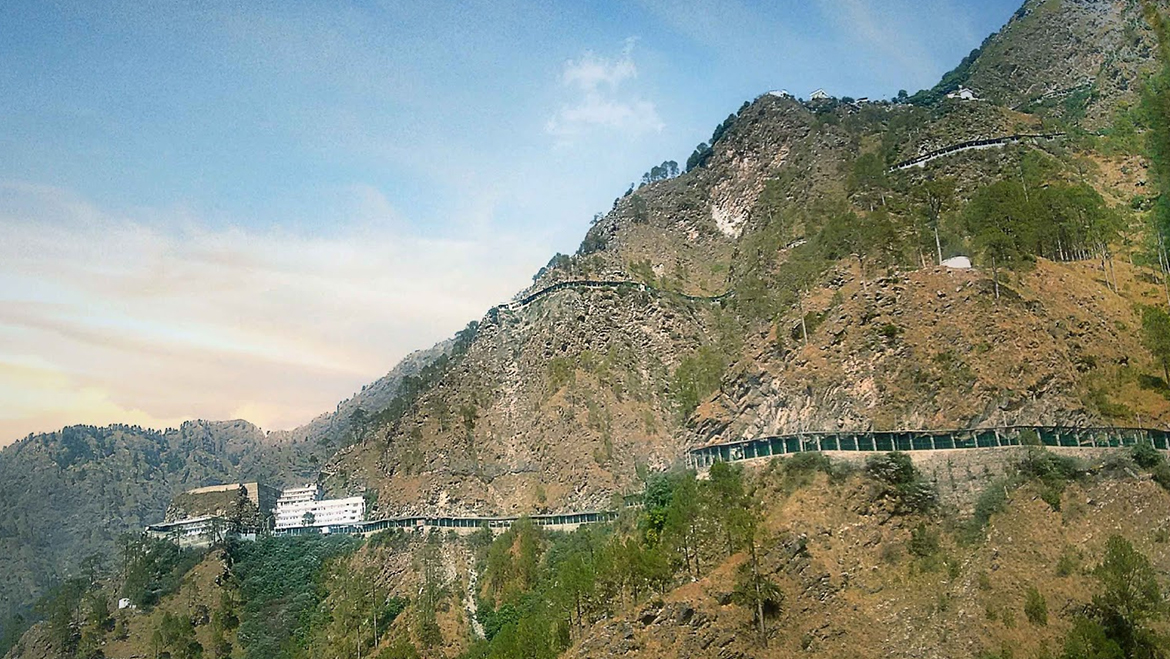
Vaishnavi did what Rama had told her to and went to the Trikuta hills to establish her ashram and meditate. Soon, the glory of Vaishnavi started spreading to others who came to her ashram to take her blessings.
Her stories of miracles reached the Mahayogi Guru Goraksh Nath, who was aware of the conversation between Rama and Vaishnavi. He then asked his most trusted disciple, Bhairav Nath, to inquire about Vaishnavi.
4. Boon to Bhairav Nath
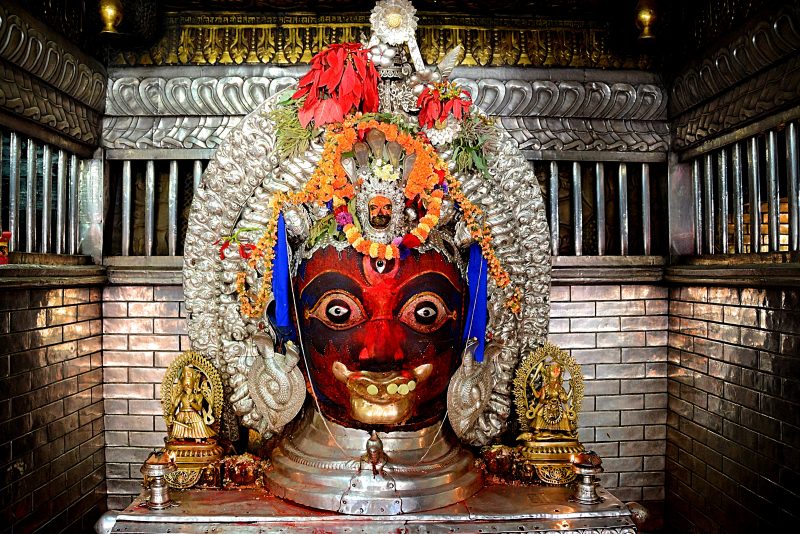
Bhairav Nath reaches Trikuta Hills and gets smitten with Vaishnavi’s unparalleled beauty. He then pesters her to marry him. However, Vaishnavi rejects him. Bhairav Nath continues to bother Vaishnavi, prompting her to leave the ashram and go uphill to continue her penance. While Bhairav Nath continued to chase making her more annoyed. The Devi, on finally reaching the Holy cave, beheads Bhairav Nath. Bhairav Nath realises his mistake and asks for forgiveness. Vaishnavi, moved by his pleadings, gives him a boon that no pilgrimage to Vaishno Devi will get fulfilled until and unless the devotees visit the Bhairav Nath and take his blessings.
Since then, it has been a tradition to visit the spot where Bhairav Nath’s head had fallen and take his blessings. Only after that, did the pilgrimage of the devotees get completed and Goddess Vaishnavi fulfils their hopes.
Vaishnavi, after reaching the caves and killing Bhairav Nath, decides to shed her Human form and turn into a rock to complete her penance. Thus, The Devi takes the form of a Five and a half feet rock with three pinds honoured on top of it.
Also Read: Pahalgam – Hill Station Of Jammu And Kashmir
Other tales related to Vaishno Devi
1. Reference in Mahabharat
The Holy shrine of Vaishno Devi finds its reference in the Mahabharata. Before the beginning of the War, Shri Krishna, the eighth Human Incarnation of Vishnu, asked Arjuna, the chief of Warrior among Pandavas, to take the blessings of the Vaishno Devi.
2. Tale of Pandit Shridhar
The story of Pandit Shridhar is another remarkable tale of the Miracles of Vaishno Devi. Pandit Shridhar was a poor man who barely made his ends meet. One day He got a dream where the Goddess Vaishnavi herself appeared and asked him to visit her shrine. Shridhar, Upon her invitation, decides to visit the abode of the Devi. While doing so, he gets lost in the path. Again, the Devi appears in his dreams and guides him through the path to reach her shrine. Shridhar successfully reaches the Shrine and takes her blessings. The Devi fulfils all his prayers and takes away his problems.
It is also said that no devotee can embark on visiting the shrine unless the Devi herself calls them. If the Devi has not invited you, then even after making hundreds of plans and schedules, you can not visit her shrine. On the Other Hand, If she has called you, then despite having no plans, you somehow reach her abode without facing any problem during the journey.
3. Visit by Guru Gobind Singh
Guru Gobind Singh, while on his way to Purumandal, visited the Holy shrine of Vaishno-Devi. This is the earliest record of any historical figure visiting the shrine.
Other Shrines at Vaishno Devi
When Vaishnavi was running away from Bhairavnath, she halted at Banganga, Charan-Paduka, Ardhkumari and at last, the Holy shrine. Today, these places carry sacred values to them. Devotees, on their way to the Vaishno Devi shrine, visit these places and offer their prayers at these locations.
Let us have a brief look at these Shrines
1. Charan-Paduka
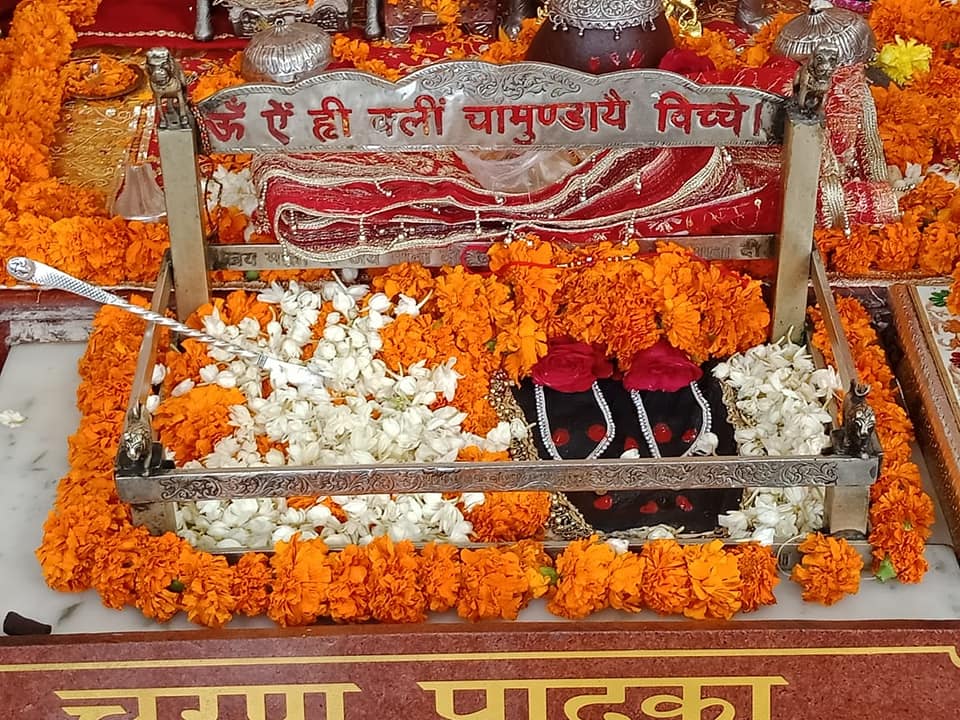
This is set to be the first place where The Goddess had put her foot, hence the name Charan-Paduka. Devotees start their journey after taking blessings from the Charan-Paduka temple.
2. Banganga
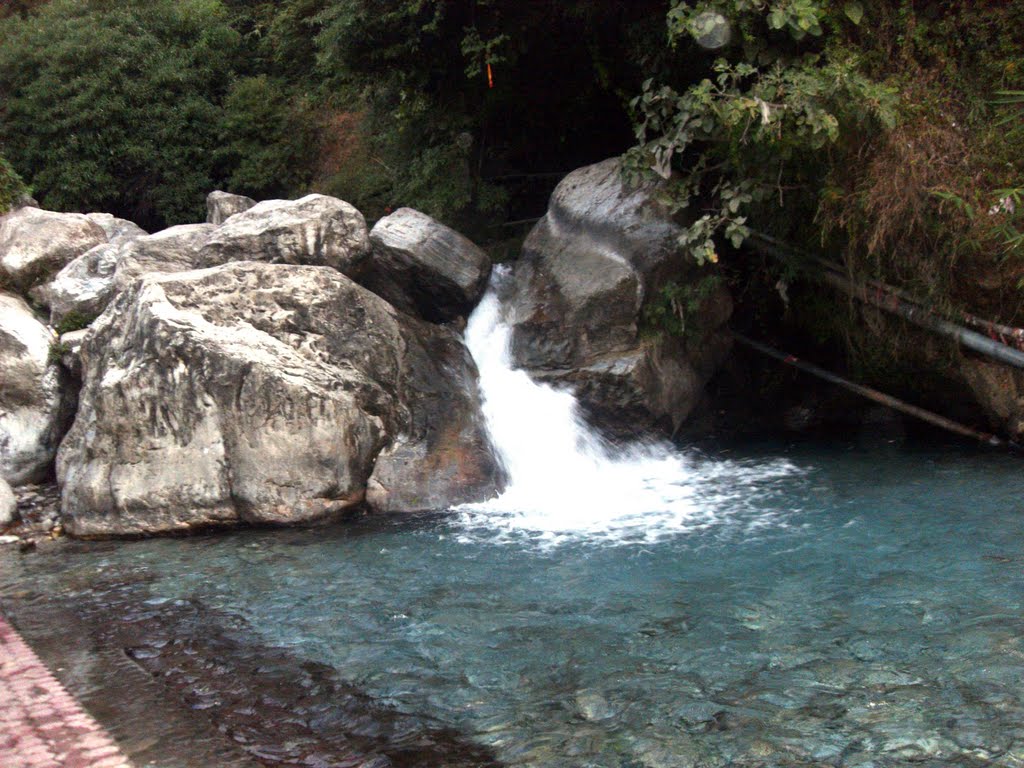
3 Kilometers from Katra, Banganga is in the foothill of Trikuta Hills. It is said that one of the companions of Vaishnavi, Langoor Vir, got thirsty while going uphill. The Goddess then took her bow and shot the arrow in the rock, thus, creating a stream of water which is now known as Banganga.
3. Ardh-Kumari
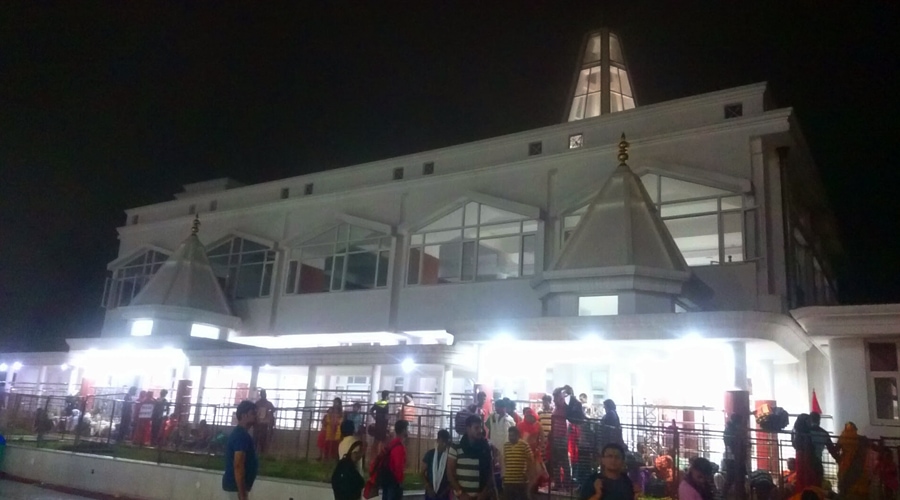
Ardh Kumari is located amid the trek route. Alongside the Ardh Kumari caves, lies another point is known as Garbhujan. Here, The Goddess had kept herself hidden from Bhairav Nath for nine months by keeping herself in a fetus-like position. Hence, this place got its name Garbhujan. The devotees have to crawl inside the cave, where there is a shrine with deities Laxmi, Saraswati and Parvati in the Sanctum sanctorum.
4. Charan-Ganga
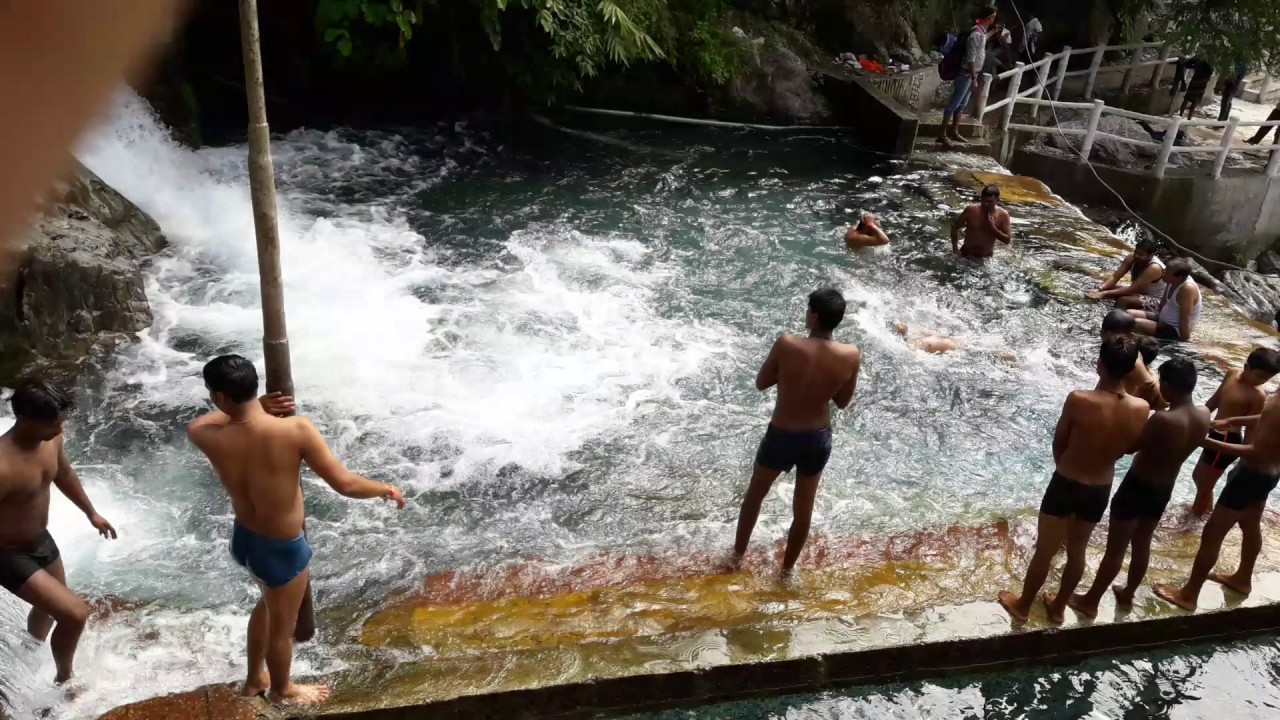
Charan Ganga is a stream of fresh water that flows from the feet of Goddess Vaishnavi. Hence it is called Charan Ganga. The devotees take a Holy bath inside the Bathing ghat inside the Complex. Devotees also take water in water bottles to purify their Homes and Home-temple.
5. Bhairav-Nath
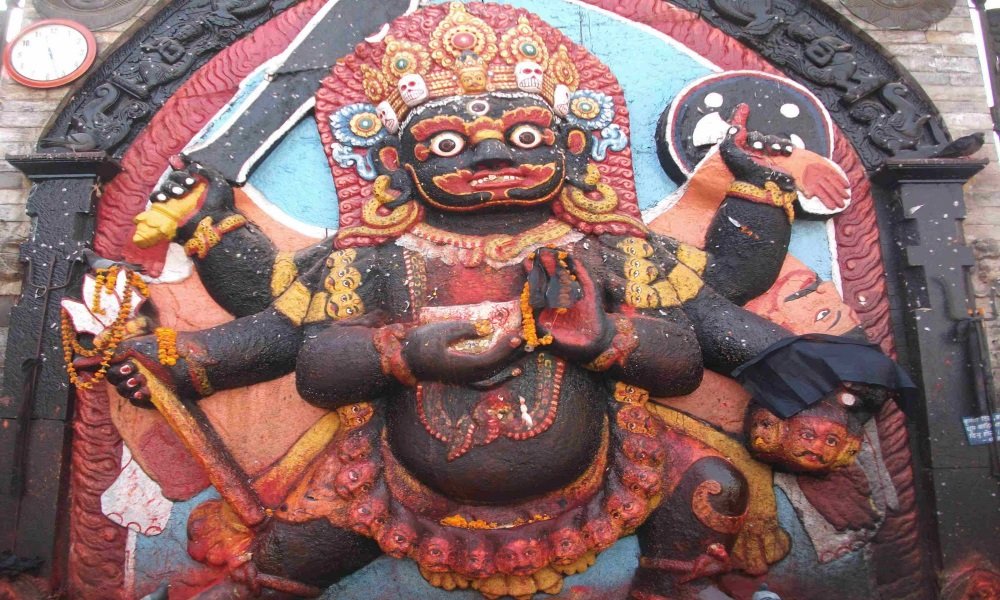
2km from the Holy shrine of Goddess Vaishnavi, lies the temple of Bhairav-Nath who was killed by the Goddess. It is the same place uphill where his head had fallen after beheading. It is said that the pilgrimage to Vaishno-Devi is never completed if one does not take the blessings of the Bhairav-Nath temple.
Trekking and Darshan at Vaishno-Devi
The whole journey of reaching Vaishno Devi Shrine is physically straining. It takes hours for Devotees to reach the Shrine and take blessings.
1. Going for the Darshan
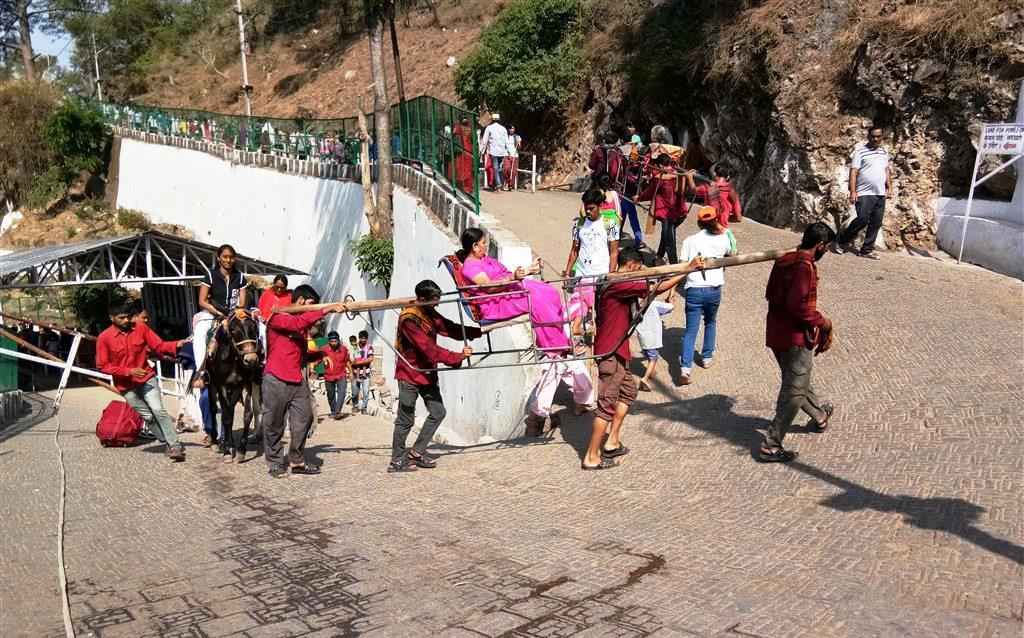
Every day, around thirty to forty thousand devotees are coming up to offer their prayers to the Goddess. To avoid Hassle and crowd, the Devotees have to take a ticket at the ticket counter in the fountain chowk. After getting the ticket, Devotees walk another 4 to 5 km to reach the first checkpoint Banganga from where they start their journey.
The route is a 15km stretch with good space to walk. The entire route has shops, small cafes, public toilets, CCTV cameras and loudspeakers for public announcements. There are dustbins around and it is advised to every pilgrim that they do not loiter around on the premises of Devi’s Shrine.
Trekking, as said before, is tiring but pilgrims stop at places to take a rest and then resume their journey. The devotees are filled with spirituality and sing hymns and bhajans for the Goddess while trekking which energises the entire ambience of the surrounding.
3 kilometres before the Mandir, the Devotees are asked to keep their phones and electronic gadgets in the locker and take their keys. From there you can only carry prasad which you get at that point in a kit and some cash. This is the last checkpoint and after that, you are taken to the sanctum scrotum through the marble caves. The devotees are taken in a queue, which is different for both men and women.
After having darshan, when you come out of the caves, you are met with the divine and pristine ambience at the top of the hill. After taking a rest, Devotees embark on the journey to seek blessings from Bhairav Nath Temple which is again at a distance of 2km from the main shrine.
2. Coming Down After Darshan
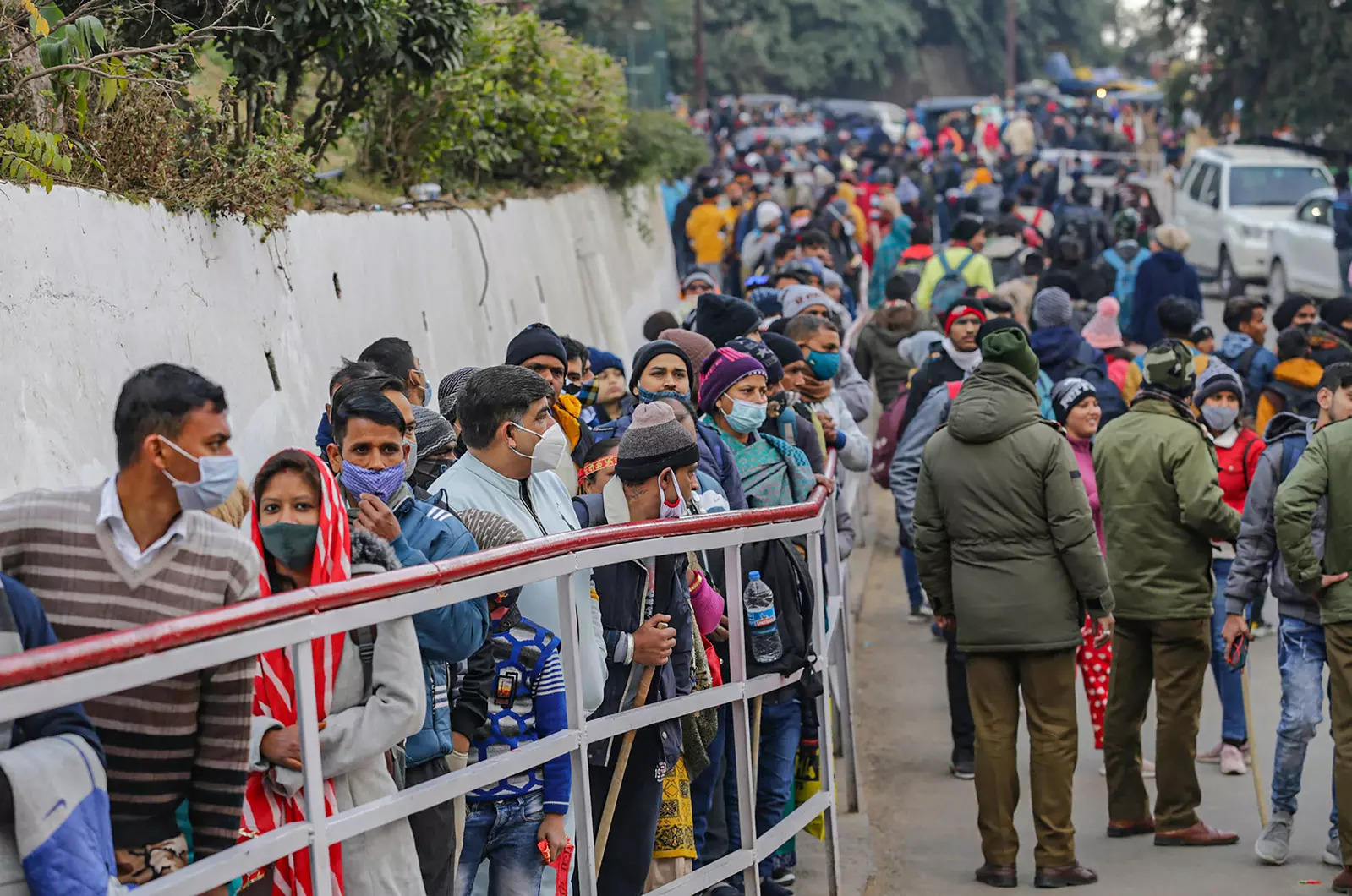
Coming down from uphill is quite easier than climbing the hill. There are many kiosks and rest houses where you can relax and take a rest after Darshan. At Banganga Point, there are many shops where you can shawl, dry fruits, religious commodities, pictures and showpieces.
3. Ponies, Palanquins and Helicopter facilities.
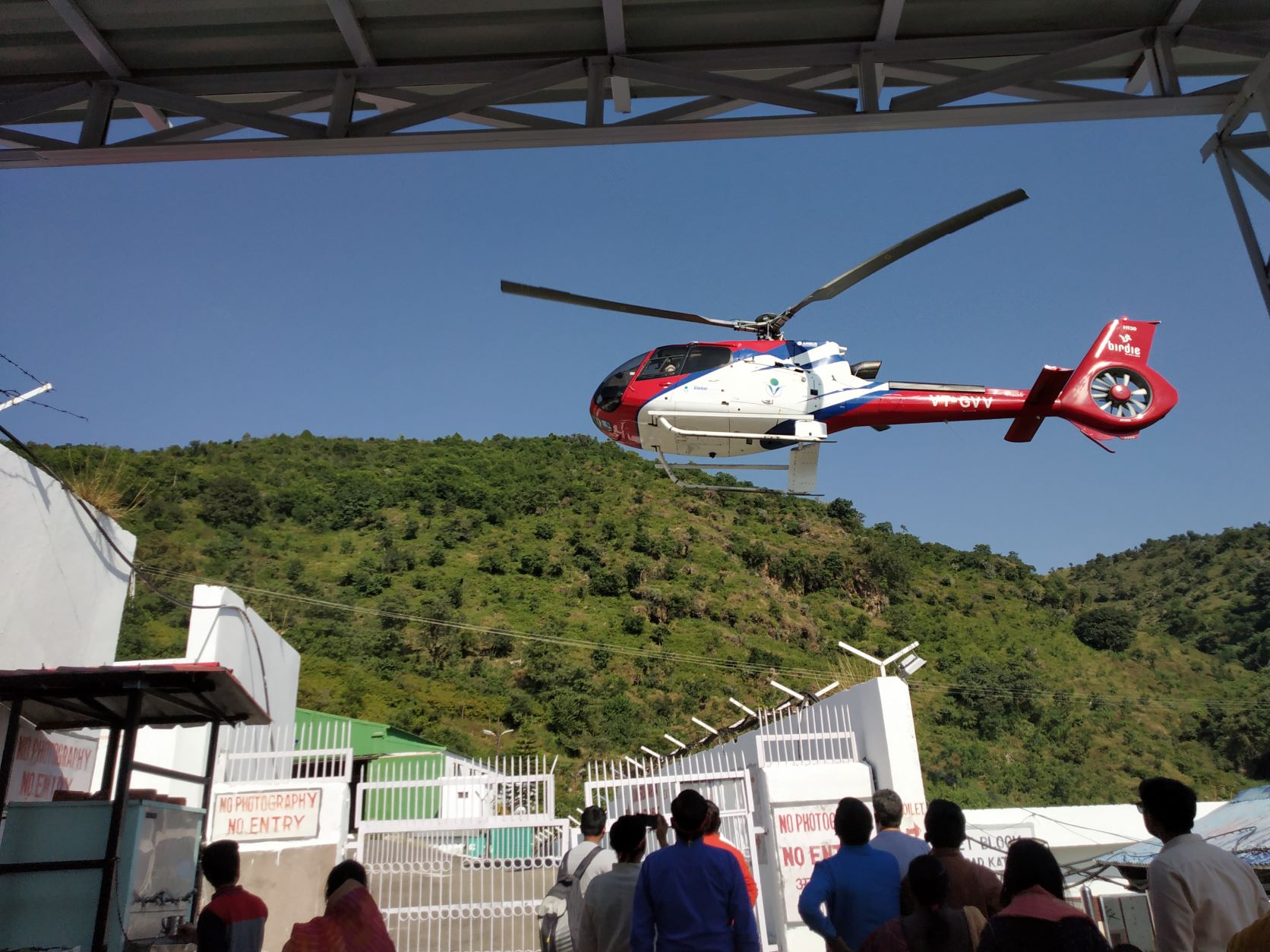
For those pilgrims who find it difficult to walk farther distances or have any health issues, the Pony, Palanquin and Helicopter facilities are provided. Pilgrims who wish to hire a Helicopter can have a pre-booking through an Online website. The rates are decided by the trust. It is advised to the trekkers not to throw stones at ponies and donkeys.
How to Reach Vaishno-Devi?
Vaishnodevi is located in the Katra town of Jammu state. Jammu is connected to the rest of the country with good Roads, Railways and Airports. To reach the temple, you must first reach Katra town which is 50 km from Jammu.
Jammu Airport is the nearest airport to Katra. Both Indian Airlines and Jet Airways offer their services in the state.
If you wish to go to Katra via road, then there are standard and deluxe bus services. Highway 1A connects Jammu to the rest of India. One advantage of going via road is that you can enjoy the picturesque locations while coming to Katra. At last, if you wish to reach the location via Railway stations, then Uttar Sampark Kranti and Shri Shakti Express take you directly to the Katra Railway Stations. The Vande Bharat express, which was recently integrated into Indian Railways, also connects Delhi to Katra.
Accommodation in Katra
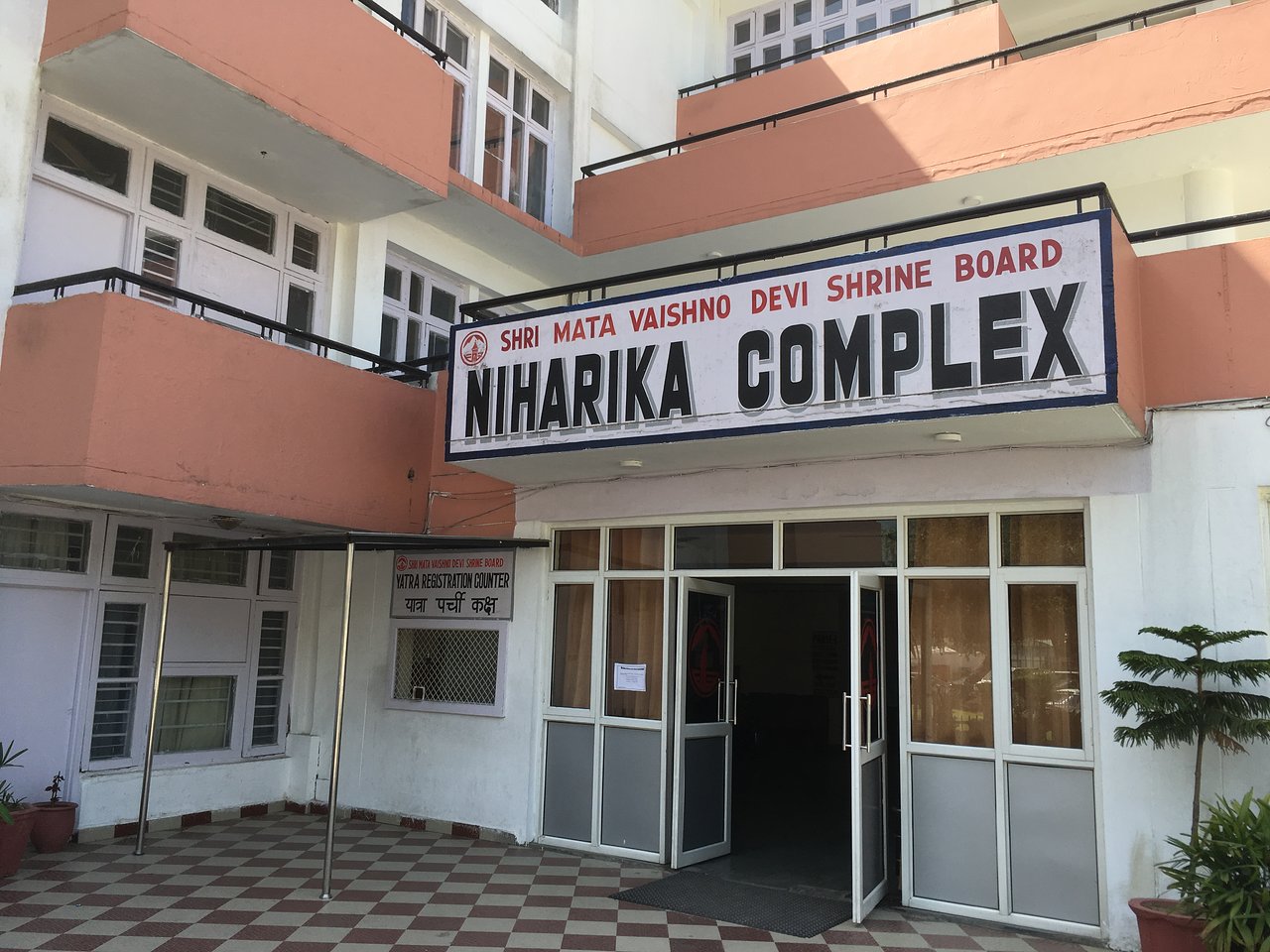
For a better experience at the shrine of Mata Vaishno Devi, the Vaishno Devi shrine board provides you with Accommodation that is well maintained, clean and affordable. These accommodations are available at Jammu (at Vaishnavi Dham, Kalika Dham and Saraswati Dham near Railway Station), at Katra (at Niharika Yatri Niwas, Shakti Bhawan, and Ashirwad Bhawan situated at the Bus stand) Katra. Another accommodation, Trikuta Bhawan, Katra is available near the 2nd Yatra counter (YRC II).
Accommodation for all Shrine Board Guest houses/dormitories can be booked (subject to availability) at the reception of these guest houses or the Enquiry and Reservation counter at the Niharika complex. For better chances of getting confirmed rooms, it is better to book a rest house in advance.
Some of the other best stays in Katra are Dharamshala Baba Banda Bahadur, Yatri Niwas, Katra, Maaji Vaishno Palace Yatri Niwas, and Yatri Niwas tourist Retaining Center and Mangal Bhavan Dharamshala.
There are many Authentic Resorts and Restaurants available in Katra where you can get healthy and flavorful cuisine.
Conclusion
Conclusively, The trip to Vaishno Devi is a unique blend of trekking, Pilgrimage and family tour. Here, you can travel alone, with a partner or with family. One good thing about a trip to Vaishno Devi is that Every age group can enjoy it. For Elders, it is a way to move towards the abode of the supreme. For middle-age groups, it is a great time to spend with the whole family. Children on the other hand find enjoyment in trekking and pony rides. Furthermore, The pristine nature and cool atmosphere in the hills make it more delightful for the trekkers.
The only thing expected from devotees is that they do not linger around throwing waste in the shrine complex.
Frequently Asked Questions
When is the best time to visit Vaishnodevi?
The best time to visit Vaishnodevi is between March to October. Devotees also visit the shrine in huge numbers during the period of Navratri.
What should people carry with them while trekking?
It is advisable to wear loose clothes as trekking uphill may take time and it gets uncomfortable to walk in jeans or tight clothing. Also, it is beneficial to carry some cash around 5 to 7 thousand, water bottles, some light snacks, paper soap, blankets and a first aid box.
Is there any food stall along the route?
Yes, there are many stalls where you can get snacks to eat while you are trekking. Also, there are small outlets of Cafe coffee day along the route.

